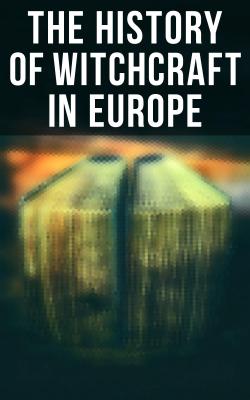ТОП просматриваемых книг сайта:
The History of Witchcraft in Europe. Брэм Стокер
Читать онлайн.Название The History of Witchcraft in Europe
Год выпуска 0
isbn 4064066051761
Автор произведения Брэм Стокер
Жанр Документальная литература
Издательство Bookwire
Lucian gives, or pretends to give, an account of the manner in which Alexander gained so extraordinary a success. He says, that this young man in his preliminary travels, coming to Pella in Macedon, found that the environs of this city were distinguished from perhaps all other parts of the world, by a breed of serpents of extraordinary size and beauty. Our author adds that these serpents were so tame, that they inhabited the houses of the province, and slept in bed with the children. If you trod upon them, they did not turn again, or shew tokens of anger, and they sucked the breasts of the women to whom it might be of service to draw off their milk. Lucian says, it was probably one of these serpents, that was found in the bed of Olympias, and gave occasion to the tale that Alexander the Great was begotten by Jupiter under the form of a serpent. The prophet bought the largest and finest serpent he could find, and conveyed it secretly with him into Asia. When he came to Abonotica, he found the temple that was built surrounded with a moat; and he took an opportunity privately of sinking a goose-egg, which he had first emptied of its contents, inserting instead a young serpent just hatched, and closing it again with great care. He then told his fellow-citizens that the God was arrived, and hastening to the moat, scooped up the egg in an egg-cup in presence of the whole assembly. He next broke the shell, and shewed the young serpent that twisted about his fingers in presence of the admiring multitude. After this he suffered several days to elapse, and then, collecting crowds from every part of Paphlagonia, he exhibited himself, as he had previously announced he should do, with the fine serpent he had brought from Macedon twisted in coils about the prophet’s neck, and its head hid under his arm-pit, while a head artfully formed with linen, and bearing some resemblance to a human face, protruded itself, and passed for the head of the reptile. The spectators were beyond measure astonished to see a little embryo serpent, grown in a few days to so magnificent a size, and exhibiting the features of a human countenance.
Having thus far succeeded, Alexander did not stop here. He contrived a pipe which passed seemingly into the mouth of the animal, while the other end terminated in an adjoining room, where a man was placed unseen, and delivered the replies which appeared to come from the mouth of the serpent. This immediate communication with the God was reserved for a few favoured suitors, who bought at a high price the envied distinction.
The method with ordinary enquirers was for them to communicate their requests in writing, which they were enjoined to roll up and carefully seal; and these scrolls were returned to them in a few days, with the seals apparently unbroken, but with an answer written within, strikingly appropriate to the demand that was preferred. — It is further to be observed, that the mouth of the serpent was occasionally opened by means of a horsehair skilfully adjusted for the purpose, at the same time that by similar means the animal darted out its biforked tongue to the terror of the amazed bystanders.
105. Livius, Lib. I, c. 16.
106. Dionysius Halicarnassensis.
107. Livius, Lib. I, c. 19, 21.
108. Livius, Lib. I, c. 31.
109. Ibid.
110. Livius, Lib. I, c. 36.
111. Livius, Lib. I, c. 39.
112. Livius, Lib. III, c. 6, et seqq.
113. Epod. V.
114. Metamorphoses, Lib. VII.
115. Lib. VI.
116. Horat., de Arte Poetica, v. 150.
117. Plutarch, North’s Translation.
118. Matt. c. xii, v. 24, 27.
119. Acts, c. viii.
120. Clemens Romanus, Recognitiones, Lib. II, cap. 9. Anastasius Sinaita, Quaestiones; Quaestio 20.
121. Clemens Romanus, Constitutiones Apostolici, Lib. VI, cap. 7.
122. Acts, c. xiii.
123. Ibid, c. xix.
124. Suetonius, Lib. VI, cap. 14.
125. Tacitus, Historiae, Lib. IV, cap. 81. Suetonius, Lib. VIII, cap. 7.
126. Hume, Essays, Part III, Section X.
127. Philostratus, Vita Apollonii, Lib. I, cap. 5, 6.
128. Philostratus, Vita Apollonii, Lib. I, c. 10.
129. Ibid, c.13.
130. Ibid, c. 13, 14.
131. Philostratus, Lib. IV, c. 10.
132. Philostratus, Lib. IV, c. 25.
133. Philostratus, Lib. IV, c. 45.
134. Philostratus, Lib. VIII, c. 5.

